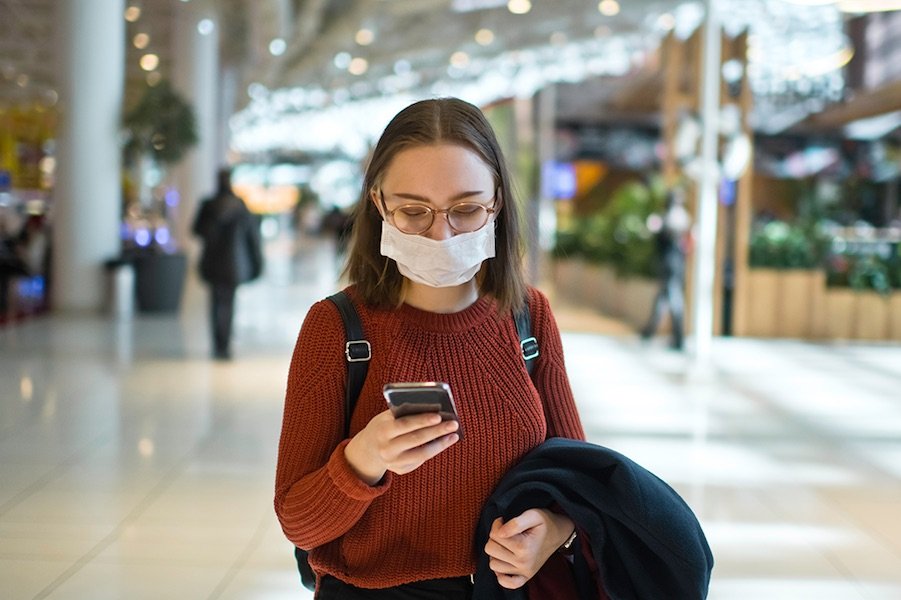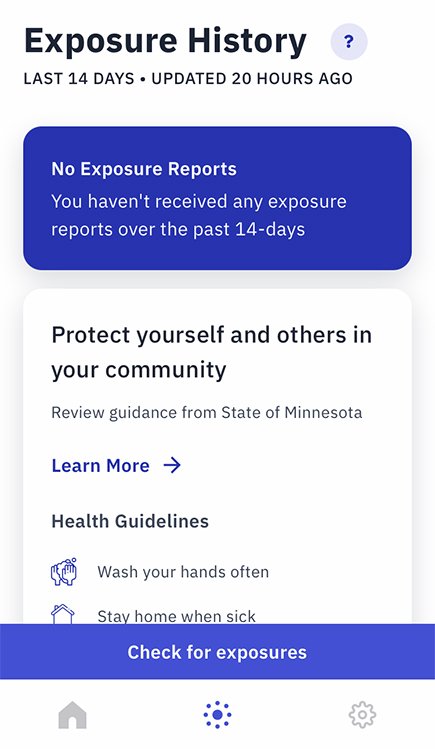Apps curb pandemic spread and protect user privacy

Photo credit: iStock
CSE professor provides insight on new app
December 29, 2020
A new mobile app could make smartphones one of Minnesota’s best tools for curbing the spread of the coronavirus pandemic—and it could do so without sacrificing people’s privacy.
Late last month, the state of Minnesota unveiled COVIDawareMN. The app is one of many based on open-source software by the PathCheck Foundation with support from Apple and Google that aim to quickly and efficiently alert those who may have been exposed to the virus without collecting data that identifies who that person is or that tracks where they go.
College of Science and Engineering professor Shashi Shekhar, who advocated for smartphone-based contact tracing early in the pandemic, approves of this app. He also knows why people would be cautious.
"Smartphone-location-based contact tracing could not only save lives now, but also provide valuable information to public health researchers to improve the understanding of epidemiology and improve intervention methods," Shekhar wrote in a March 29 Scientific American essay.

The more Minnesotans who download the COVIDawareMN app, the more effective it will be in slowing the virus’s spread, said Shekhar, a McKnight Distinguished University Professor of computer science and engineering.
“If many downloaded this app, a very large fraction of exposures to the virus would be caught,” Shekhar said.
“But even if we only get 15 to 20 percent adoption, we will still see an effect," he said.
The process of figuring out who may have been in contact with an infected person and notifying them to prevent further spread, often called contact tracing, has been a public health tool for more than 100 years, he said. Experts might, for example, interview people hospitalized from food poisoning to pin down the source of foodborne illness and prevent anyone else from eating that food. The introduction of mobile technology addresses several of the limitations that traditionally come with contact tracing—and speeds up the process.
Mobile tracing apps have already been implemented all over the world, though countries have adopted the technology at different rates.
The COVIDawareMN app is available for free download from either the App Store (iPhones) or Google Play (Androids). It works by generating anonymous numbers to represent your phone. As you go about your daily activities, the app makes note of the anonymous numbers of other nearby devices with COVIDawareMN installed. When someone in Minnesota tests positive for COVID-19, that person can choose to open the app and allow a public health professional to record his or her phone’s anonymous numbers and add these numbers to a state list that represents all confirmed cases.
The phone then downloads this list once a day to see if the owner (you, for instance) has been near any of the anonymous numbers in the last two weeks—and whether that device with the anonymous number was close enough for a long enough time to possibly allow that phone owner's virus to spread. If yes, your phone will notify you that you may have been exposed and provide guidelines from the Minnesota Department of Health about the next steps (e.g., self-quarantine) to take in monitoring your health and keeping those around you safe.
For Your App Only
While the app is a powerful tool for limiting the spread of COVID, many may reasonably question whether it will share data about them or otherwise intrude on their privacy—a concern that Shekhar said is valid when it comes to mobile technologies.
“Smartphone locations have been abused in some places around the world for surveillance and to prosecute vulnerable groups, so there is good reason to be cautious,” he said.
“The main debate that started in March was around the question: ‘How can we do this in a privacy-centered manner?’" Shekhar explained. "If the purpose is primarily contact tracing, let’s do it in a way that people cannot abuse for some other purpose.”
Shekhar said he approves of COVIDawareMN and related apps because they were designed to protect privacy. One key feature of these apps is that they avoid two commonly used technologies on mobile phones: GPS, which is designed to show exactly where in the world a device is, and WiFi, which can do the same when a signal is available.
Instead, these apps rely on a low-energy version of Bluetooth, which can only transmit wireless data to and from another device at a very short range. Bluetooth connections will often drop when one device moves more than about 30 feet apart. Bluetooth doesn’t know where you are in the world at any point, just whether you are close enough to another device for a signal to transmit.
The apps also ensure privacy through the use of the anonymous numbers, which cannot be traced back to your phone or linked to your identity. This is an example of what computer scientists call a one-way function, Shekhar said, where programs are designed to easily start at point “A” and compute their way to “B,” but find it extraordinarily hard to do the opposite and go from “B” to “A.” In this case, that means there’s no feasible way to generate identifiable data based on anonymous numbers alone.
“A large number of precautions have been taken to protect privacy,” Shekhar said.
“If anybody has a doubt about what the app is doing, they can read the code," he said. Since COVIDawareMN and related apps are based on the PathCheck Foundation’s open-source platform, anyone can freely pore over the code and scrutinize what each portion does.
What You Can Do
By the middle of December 2020, less than 10 percent of Minnesotans had downloaded the COVIDawareMN app. Shekhar urged residents across the state to download the app soon and encourage friends and family to do the same, especially for those gathering even in small numbers to celebrate any of the year’s remaining holidays.
“Civic leaders and educational institute heads have already started to set examples by downloading the app and asking their followers to do the same,” he said. “We ask leaders of businesses, nonprofits, and religious organizations, as well as traditional and social media leaders, to encourage their followers to download the app and spread the word via public outreach and education. COVID-19 is a formidable opponent and it will take a united and determined effort to manage it in coming weeks, months and years.”
Download COVIDawareMN for your mobile device or learn more about its privacy measures.
Edited from Inquiry, a publication of the Office of the Vice President for Research. Read the original story by Kevin Coss.
